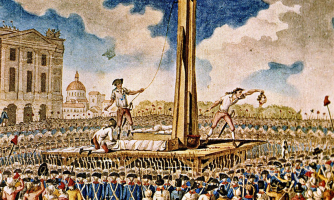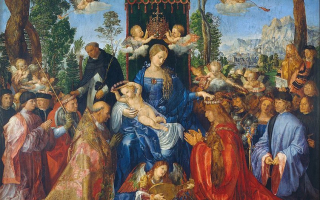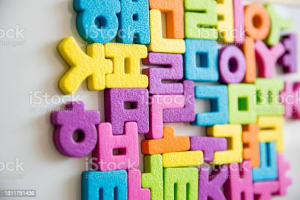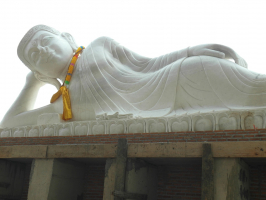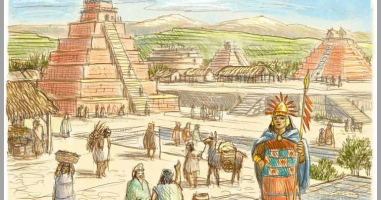Top 7 Reasons Why Indians Pierce Their Noses
Nose piercing has been an integral part of Indian culture and tradition for centuries. The reasons why Indians pierce their noses are multifaceted, reflecting ... read more...a blend of tradition, symbolism, and personal choices. In this discussion, Toplist will delve into some of the key motivations behind this enduring tradition.
-
The first reason why Indians pierce their noses is that it has been an enduring cultural tradition through the ages. It holds profound significance in the rich tapestry of Indian heritage, often marking significant milestones in an individual's life. Rooted in ancient customs, this practice symbolizes the transition from girlhood to womanhood, signifying maturity and readiness for marriage. It's a rite of passage that connects generations, bridging the past with the present.
Within this cultural context, the nose-piercing ceremony in India is a cherished family affair, celebrated with joy and enthusiasm. Elders impart wisdom and blessings to the young girls, strengthening familial bonds and passing down traditions. The jewelry chosen for nose piercings, such as gold nose rings or studs, reflects not only the wearer's cultural heritage but also their social and economic status.
Taking everything into consideration, nose piercing as a cultural tradition in India is a beautiful reminder of the importance of customs and rituals in preserving cultural identity and values. It embodies the timeless connection between generations, making it an integral part of Indian culture.
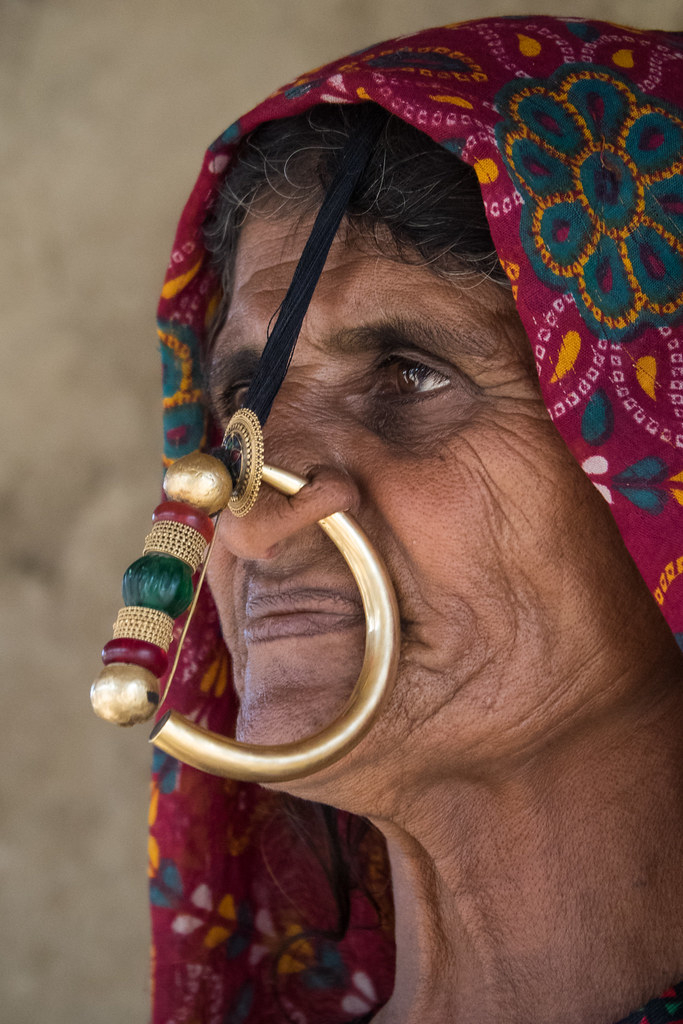
The Jats of Kutch, a cattle breeding nomadic Muslim community in India. Photo on Flickr by Rita Willaert Video by Symbol Sage -
Second, nose piercing in India carries profound religious significance, intertwining spirituality with physical adornment. It is deeply rooted in various Indian religions, with Hinduism, in particular, placing significant importance on this practice. The goddess Parvati, often depicted with a nose ring, serves as a symbol of femininity and marital bliss, making nose-piercing a way to honor her divine attributes.
In addition to Parvati, nose piercings can symbolize devotion and purity in Hinduism, acting as a reminder of one's spiritual journey and commitment to a higher power. Many Hindus believe that piercing the left nostril (associated with feminine energy) helps channel spiritual energy and balance the body's chakras.
Beyond Hinduism, other Indian religions like Jainism and Buddhism also embrace nose-piercing as a spiritual tradition. In Jainism, it symbolizes non-attachment to worldly desires and signifies asceticism, while in Buddhism, it represents a commitment to the Eightfold Path and spiritual awakening.
As a result, the fact that Indians pierce their noses serves as a tangible expression of one's faith and commitment to religious values, bridging the gap between the physical and the spiritual realms and acting as a visible reminder of one's religious identity and devotion.
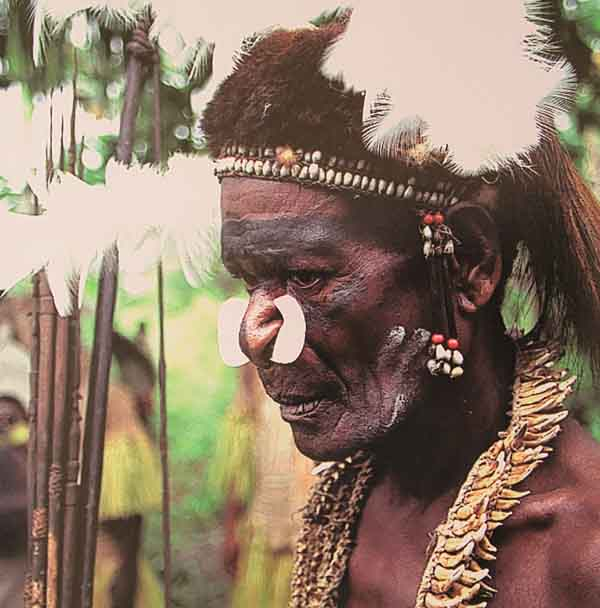
Image by Rita Willaert on Wikipedia (https://en.wikipedia.org/wiki/File:Asmat1116.jpg) Video by Infuse Pictures -
In India, nose piercing is not just a fashion statement; it often conveys a woman's marital status, contributing to a complex and culturally nuanced symbolism. This practice varies across regions and communities, but a common belief is that the type and placement of the nose ring or stud can signify whether a woman is married or single.
For example, in some Indian regions, women wear a nose stud in their left nostril to indicate that they are married, while a nose stud in the right nostril suggests that they are single and available for marriage. In other areas, both married and unmarried women may choose to pierce their left nostril, reflecting local customs and traditions.
This distinction in marital status through nose piercing has roots in the idea that a married woman should be easily identifiable within her community, as it carries implications for her social role and responsibilities. It also acts as a means of preserving cultural customs and signaling one's eligibility for marriage or commitment to a spouse.
In summary, the practice of nose piercing in India as an indicator of marital status is a deeply ingrained cultural tradition that holds significance not only for the individual but also for the broader community where she resides.
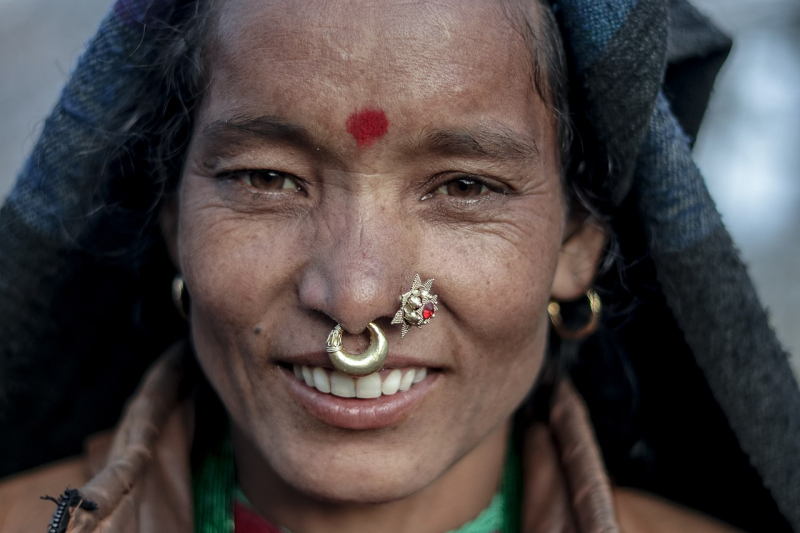
An Indian woman with nose piercings on the left to mark her maritual status. Photo on Wikimedia Commons -
The next reason why Indians pierce their noses is their belief in healing properties and Ayurvedic benefits. According to Ayurveda, the traditional Indian system of medicine, the nose is considered a vital center for health and well-being. One significant Ayurvedic benefit is the regulation of the menstrual cycle, as it is believed that piercing the left nostril of women can stimulate the female reproductive organs and alleviate menstrual issues.
Additionally, nose piercing is thought to reduce the pain experienced during childbirth, with the left nostril's calming energy believed to aid in the birthing process. Another claimed benefit is improved respiratory health, as piercing the nose can promote better airflow through the nasal passages, potentially reducing the risk of respiratory issues.
Moreover, piercing the nose is believed to balance the body's energies, with the left nostril associated with calming lunar energy (Ida) and the right nostril with energizing solar energy (Pingala). Piercing the appropriate nostril is thought to align these energies for overall well-being, although it's essential to note that these Ayurvedic beliefs are rooted in tradition and may not be scientifically substantiated.
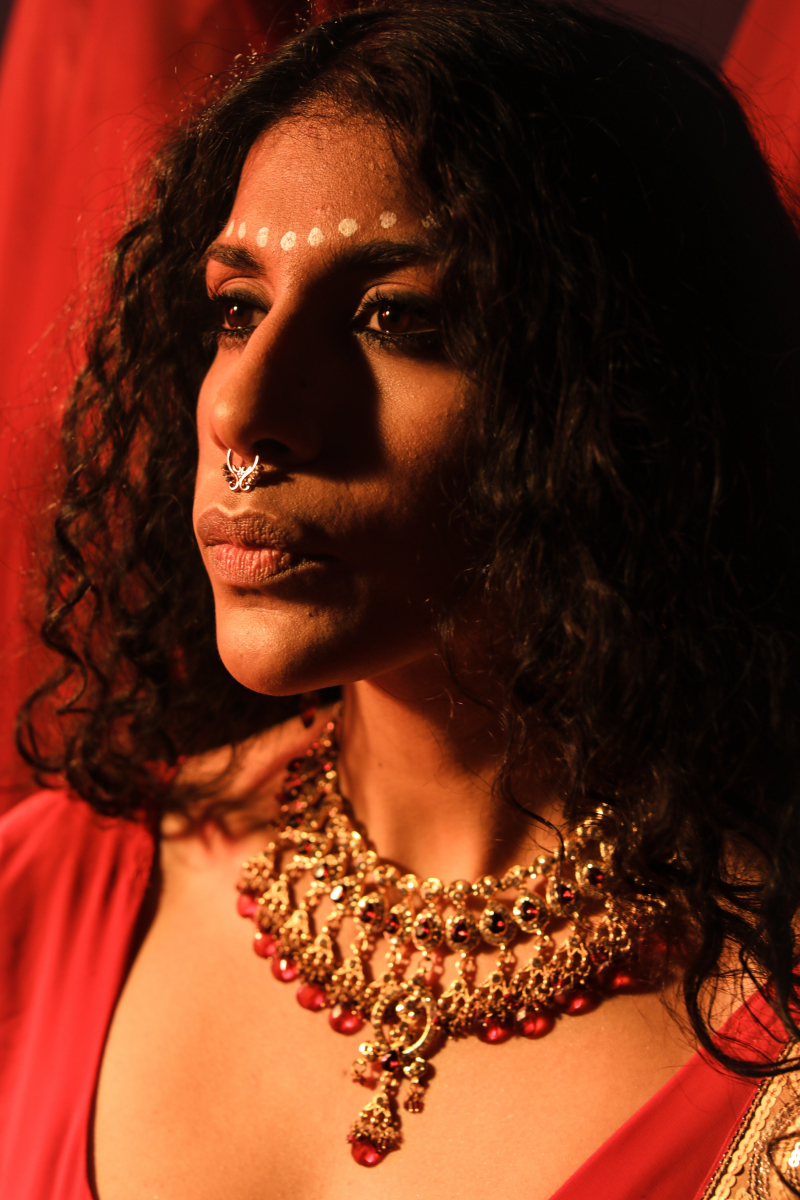
Image by cottonbro studio on Pexels (https://www.pexels.com/photo/a-woman-with-nose-piercing-9317198/) Video by Kundalini Yogini -
The culture of nose piercing in India exhibits fascinating regional variations, reflecting the diversity and complexity of the country's cultural tapestry. Different states and communities across India have their own unique customs and beliefs related to nose piercing, resulting in a rich tapestry of traditions and motivations.
For instance, in South India, it is common for women to wear large, intricate nose rings, often adorned with precious stones, as a symbol of their marital status and social standing. In contrast, in Northern India, smaller nose studs are more prevalent, and the placement of the stud may vary.
Certain tribes and ethnic groups in India, like the Adivasis in various states, have distinctive nose-piercing traditions that are deeply rooted in their culture and identity. These variations can encompass the type of jewelry used, the age at which nose piercing is performed, and the specific rituals associated with the piercing ceremony.
Regional variations extend to the significance attached to nose piercing, with some areas emphasizing its role as a cultural identifier. These variations highlight the remarkable cultural diversity within India, where nose piercing remains a dynamic and multifaceted tradition, celebrating the uniqueness of each region and community.
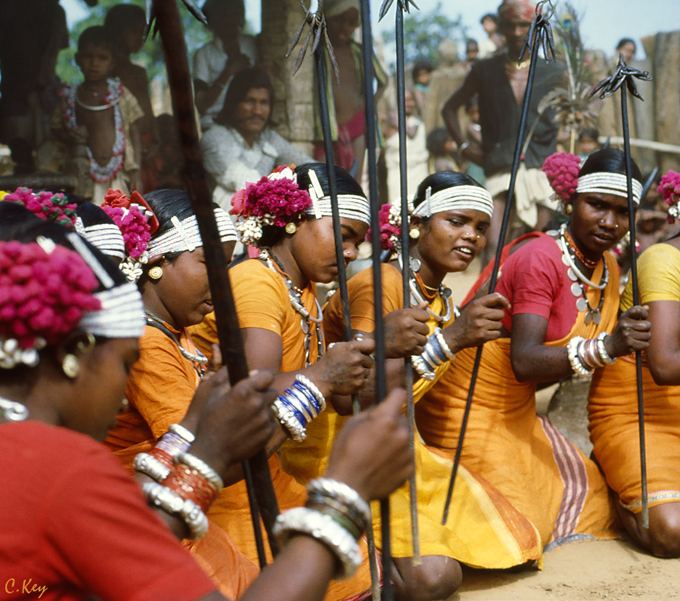
Muria religious people of Bastar district, Chhattisgarh perform at a ghotul. Photo on Flickr by Collin Key Video by Ashu's Talk -
When Indian nose piercing retains its roots in tradition and symbolism, many individuals, especially in contemporary times, choose to pierce their noses as an act of personal style and self-expression. Nose piercing provides a canvas for showcasing one's unique personality and aesthetic preferences.
The range of nose jewelry available, from elegant gold hoops to colorful gemstone studs, allows individuals to curate their own distinctive look. Some opt for minimalist, subtle nose studs, while others boldly embrace intricate and ornate nose rings, showcasing their fashion-forward sensibilities. The choice of jewelry can convey personal tastes, attitudes, and even moods.
One of the reasons why Indians pierce their noses is that it enables individuals to break away from societal norms and redefine beauty standards, allowing them to embrace their individuality with confidence. It's a way to make a statement, assert one's identity, and celebrate diversity in a country known for its rich cultural tapestry.
Therefore, nose piercing in India is not just a reflection of tradition but also a dynamic means of personal expression, enabling individuals to blend their heritage with their unique style, all while making a visual statement about who they are and what they value in the ever-evolving landscape of fashion and self-identity.
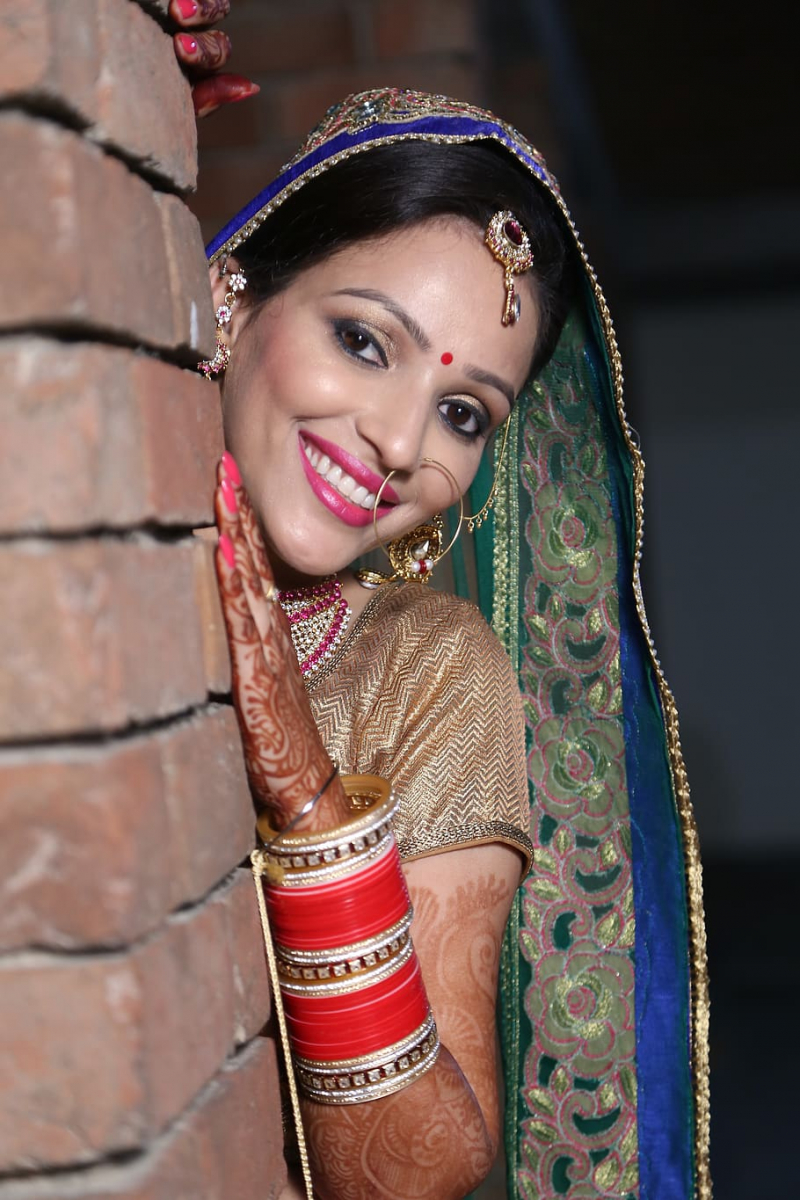
Royalty-free Indian Wedding. Photo on Pxfuel Video by News Express -
In the field of modern fashion in India, nose piercing has emerged as a trend that seamlessly bridges tradition and contemporary style. While deeply rooted in cultural and historical significance, nose-piercing culture has taken on a new dimension as a symbol of personal fashion and modern trends.
Many Indians, regardless of their cultural or religious background, now choose to pierce their noses as a fashion statement. This resurgence has led to a proliferation of diverse nose jewelry options, from delicate and minimalist studs to elaborate and avant-garde designs. Nose rings, studs, and hoops have become essential accessories, enhancing facial features and adding a touch of individuality to one's overall look.
According to Indian fashion, Bollywood celebrities and influencers have played a pivotal role in popularizing nose piercings. They showcase creative and innovative ways to wear nose jewelry, inspiring fashion enthusiasts to experiment with their own style.
Nose piercing's integration into modern fashion not only represents a fusion of the old and the new but also underscores India's ability to adapt and evolve while preserving its cultural heritage. It's a testament to the enduring charm of this tradition, which continues to thrive in a contemporary fashion landscape, making a statement of cultural pride and personal flair simultaneously.
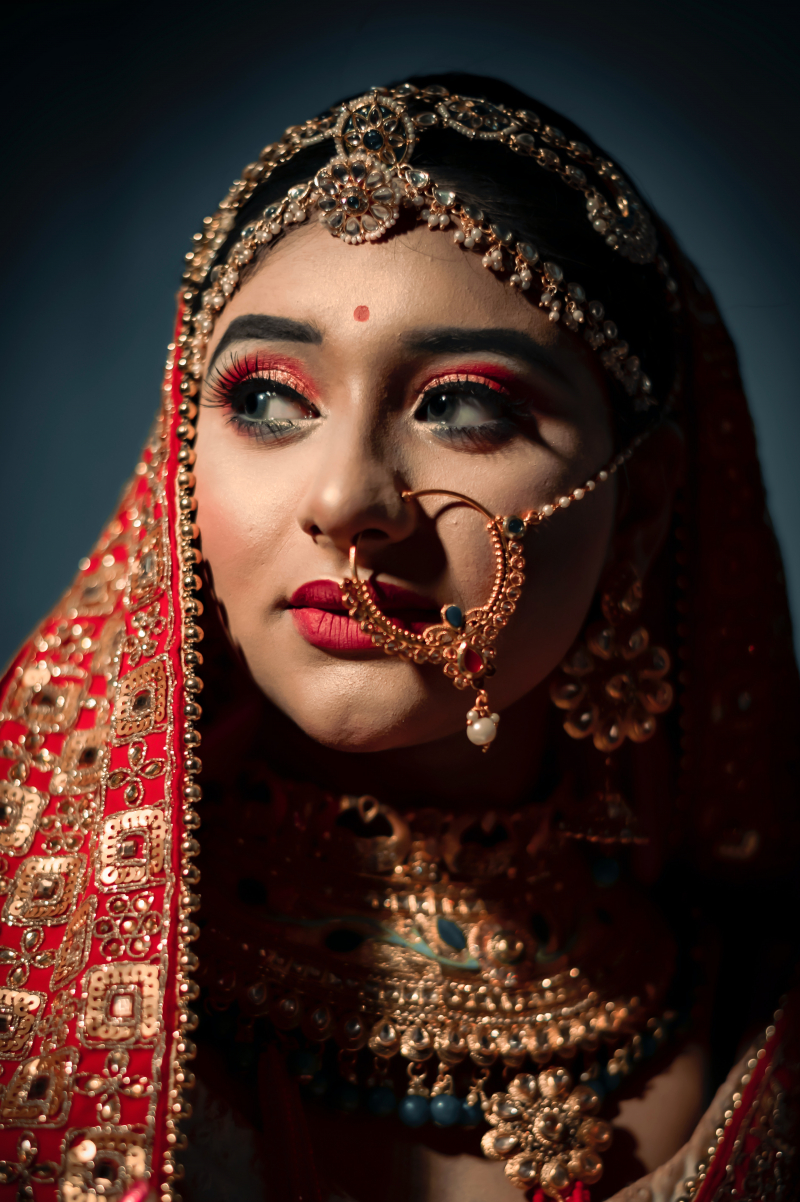
Image by Ritam Das on Pexels (https://www.pexels.com/photo/portrait-of-a-woman-with-nose-piercing-9901800/) Video by Science behind Indian traditions

















